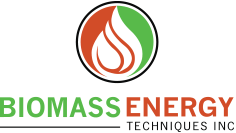Cogeneration Systems
Generating electricity and useful thermal energy in a single, integrated system.
As EPA case studies have shown, cogeneration can significantly reduce carbon emissions and energy costs.

While typical combustion systems have an efficiency of about 40-50 percent, cogeneration systems that combine the power and heat generation processes can be up to 80 percent efficient. With the immense heat generated from our BET BioMass Burner System, cogeneration through efficient use of green biomass is a reality.
BET Systems can support a number of options to convert heat energy to power in an efficient co-gen application. Each of the available options needs to be evaluated based on the primary goals of each end user, and customized to fulfill project targets considering a number of factors. Common alternatives include the following:

